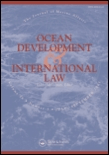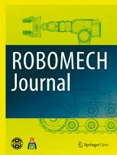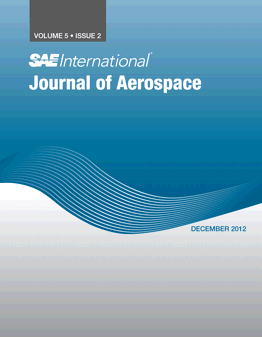
JOURNAL OF NAVIGATION
Scope & Guideline
Exploring Innovations in Navigation Science
Introduction
Aims and Scopes
- Innovative Navigation Technologies:
Focuses on the development and application of new technologies in navigation, such as GNSS, INS, and hybrid systems, to improve accuracy and reliability. - Maritime Safety and Risk Management:
Explores safety cultures, collision avoidance strategies, and risk assessment methodologies to enhance safety in maritime operations. - Data Analytics and Big Data Applications:
Utilizes data-driven approaches, including AIS data analysis and machine learning techniques, to enhance navigation systems and predict vessel trajectories. - Human Factors and Decision-Making:
Investigates the influence of human behavior on navigation practices, decision-making processes, and the effectiveness of navigational aids. - Environmental and Operational Considerations:
Examines the impact of environmental conditions on navigation and the optimization of navigation strategies in various operational contexts.
Trending and Emerging
- Autonomous and Unmanned Systems:
There is an increasing focus on the navigation of autonomous vessels and drones, driven by advancements in technology and a growing interest in autonomous operations. - Cybersecurity in Navigation Systems:
As navigation systems become more interconnected, research on cybersecurity measures to protect against potential threats has gained significant traction. - Integration of Artificial Intelligence:
The application of AI and machine learning in navigation systems for predictive analytics and decision-making support is an emerging trend. - Environmental Impact and Sustainability:
Research addressing the environmental impact of navigation practices and the development of sustainable navigation solutions is becoming increasingly relevant. - Real-time Data Utilization:
The use of real-time data for enhancing navigation accuracy and safety, particularly through the analysis of AIS and other sensor data, is a growing area of focus.
Declining or Waning
- Traditional Celestial Navigation:
Research related to celestial navigation techniques has decreased as modern technologies like GNSS have become more prevalent and reliable. - Static Navigation Models:
Interest in traditional static models of navigation has waned, with a shift towards dynamic and adaptive models that incorporate real-time data. - Historical Navigation Practices:
Studies focusing on historical navigation methods and practices are appearing less frequently, indicating a move towards more contemporary applications and technologies.
Similar Journals

JOURNAL OF THE ASTRONAUTICAL SCIENCES
Advancing Knowledge in Aerospace and Planetary SciencesJOURNAL OF THE ASTRONAUTICAL SCIENCES, published by Springer Heidelberg, serves as a leading platform dedicated to advancing the fields of aerospace engineering and planetary science. With an ISSN of 0021-9142 and an E-ISSN of 2195-0571, this journal has established a significant presence within the academic community, evidenced by its categorization in the Q2 and Q3 quartiles for 2023, positioning it among the top publications in its field. The journal encompasses a spectrum of research that spans from innovative aerospace technologies to the exploration of planetary systems, reflecting its rich scope developed since its inception in 1969. Although not Open Access, it provides vital contributions to ongoing discussions in aerospace research, appealing to researchers, professionals, and students eager to deepen their understanding of astronautics. With a notable impact factor and rankings in Scopus—66th in Aerospace Engineering and 64th in Space and Planetary Science—this journal continues to be a pivotal resource for those engaged in the exploration and utilization of space.

Proceedings of the Institution of Mechanical Engineers Part O-Journal of Risk and Reliability
Exploring New Frontiers in Safety and Quality Assurance.Proceedings of the Institution of Mechanical Engineers Part O – Journal of Risk and Reliability is a highly regarded journal published by SAGE Publications Ltd, specializing in the critical fields of Safety, Risk, Reliability, and Quality. Established in 2006 and extending its coverage until 2024, this journal serves as a vital platform for researchers and professionals to disseminate innovative findings and discuss emerging trends and methodologies related to risk assessment and reliability engineering. With an impact factor that places it in the Q2 quartile of its category and ranked 69th out of 207 in Scopus, it has garnered significant attention within the academic community, ensuring robust visibility and influence. Readers can expect rigorous peer-reviewed articles that contribute to advancing knowledge and practices in the field, fostering a deeper understanding of the complexities and integral practices essential for safety and reliability. As a leading publication within the United Kingdom, it continues to play an instrumental role in shaping contemporary discussions and research in this vital sector.

International Shipbuilding Progress
Fostering excellence in mechanical and ocean engineering.International Shipbuilding Progress is a distinguished journal dedicated to advancing knowledge in the fields of Mechanical and Ocean Engineering, published by IOS PRESS. With a rich history dating back to 1969 and over four decades of scholarly contributions, this journal serves as a vital platform for researchers, professionals, and students seeking to explore innovative technologies and advancements within the shipbuilding sector. Although it currently does not offer open access options, the journal is held in high regard, reflected by its Q3 ranking in both the Mechanical Engineering and Ocean Engineering categories according to the latest 2023 category quartiles. The journal aims to disseminate high-quality research findings and foster collaboration among experts globally, enhancing the maritime and shipbuilding industries. For those engaged in maritime innovation and engineering, International Shipbuilding Progress is an essential resource for staying abreast of the latest developments and research trends.

Brodogradnja
Elevating Standards in Engineering Design and ShipbuildingBrodogradnja is a distinguished open-access journal dedicated to the fields of Mechanical Engineering and Naval Architecture, published by the University of Zagreb's Faculty of Mechanical Engineering & Naval Architecture. Since its launch, the journal has been at the forefront of disseminating valuable research and advancements in engineering design, marine technology, and shipbuilding practices, contributing significantly to both academic literature and industrial applications. With an impressive Q1 ranking in Mechanical Engineering and a Q2 ranking in Ocean Engineering for 2023, it stands as a pivotal resource for researchers, professionals, and students alike. Moreover, the journal's commitment to open access since 2005 ensures that cutting-edge research is accessible to a global audience, facilitating collaboration and knowledge-sharing among experts in the field. Based in Croatia, Brodogradnja continues to uphold the legacy of high-quality technical scholarship and innovation, making it an essential platform for advancing marine engineering and related disciplines.

OCEAN DEVELOPMENT AND INTERNATIONAL LAW
Empowering Research for Sustainable Ocean FuturesOCEAN DEVELOPMENT AND INTERNATIONAL LAW, published by Taylor & Francis Inc, is an esteemed journal dedicated to the interdisciplinary study of ocean governance, environmental law, and international relations concerning marine resources. With an ISSN of 0090-8320 and an E-ISSN of 1521-0642, this journal serves as a vital platform for researchers, legal scholars, and policymakers interested in the evolving challenges of ocean development in a globalized context. The journal has established itself as a resourceful publication, evidenced by its ranking in the 2023 Scopus categories, where it is positioned in the 75th percentile for Law and the 66th percentile for Political Science and International Relations. Operating for over four decades, from 1973 until 2024, it is pivotal for advancing knowledge and fostering dialogue on critical issues such as environmental sustainability, international maritime policies, and legal frameworks governing the seas. Despite being a subscription-based journal, OCEAN DEVELOPMENT AND INTERNATIONAL LAW remains influential, offering significant insights that contribute to the development of effective legal instruments and governance strategies for oceanic resources.

ROBOMECH Journal
Empowering Innovation in Robotics and AI for a Better TomorrowROBOMECH Journal, published by SpringerNature, is a prominent open-access journal dedicated to the fields of robotics, mechanical engineering, and artificial intelligence. Established in 2014, the journal has quickly established itself as a vital platform for disseminating innovative research in control and optimization, instrumentation, and modeling and simulation, earning a commendable Q2 ranking in Mechanical Engineering and multiple Q3 rankings across other relevant fields in 2023. With a commitment to facilitating accessible knowledge sharing, ROBOMECH Journal promotes cutting-edge research that drives advancements in both theoretical frameworks and practical applications within the robotics community. Scholars, engineers, and professionals seeking to contribute to or stay informed about the latest developments in these dynamic fields will find the journal's rich array of articles invaluable. With its open-access model, all published research is freely available, ensuring wide dissemination and increased visibility for authors, thus fostering collaboration and innovation across disciplines.

Navigation-Journal of the Institute of Navigation
Illuminating the Path of Navigation ResearchNavigation - Journal of the Institute of Navigation (ISSN: 0028-1522, E-ISSN: 2161-4296) is a prestigious academic journal published by the Institute of Navigation (ION) based in the United States. Since its inception in 1946, the journal has aimed to advance and disseminate research in navigation, covering critical topics within the realms of Aerospace Engineering and Electrical and Electronic Engineering. With an impressive Q2 ranking in both fields for 2023 and a notable Scopus rank positioning it within the top quartile of Aerospace Engineering, it serves as an essential resource for researchers, professionals, and students interested in cutting-edge navigation technologies and methodologies. Embracing the Open Access model since 2022, the journal ensures that its high-quality content is readily accessible to a global audience. With a commitment to fostering innovation and collaboration, Navigation plays a pivotal role in shaping the future of navigation science and engineering.

Journal of Field Robotics
Driving Progress in Robotics for Real-World ApplicationsJournal of Field Robotics, published by WILEY, is an esteemed peer-reviewed journal focusing on the cutting-edge developments in the area of robotics applied to real-world environments. With an ISSN of 1556-4959 and an E-ISSN of 1556-4967, this journal serves as a vital platform for researchers and professionals keen on advancing the fields of Computer Science Applications and Control and Systems Engineering, where it has earned a prestigious Q1 ranking in both categories as of 2023. The journal, which converges in its studies from 2006 to 2024, showcases original research that enhances the understanding and implementation of robotic systems in various fields, thus promoting innovative solutions to complex challenges. Access to the journal is through subscription-based options, ensuring a rigorous selection of high-quality research articles, reviews, and technical notes that contribute significantly to the academic community. With a solid Scopus ranking—39th out of 817 in Computer Science Applications and 17th out of 321 in Control and Systems Engineering, both in the 95th and 94th percentiles respectively—Journal of Field Robotics is essential reading for anyone interested in the future of robotics technologies and their transformative impact.

QUALITY AND RELIABILITY ENGINEERING INTERNATIONAL
Exploring the Intersection of Engineering Excellence and ReliabilityQUALITY AND RELIABILITY ENGINEERING INTERNATIONAL is a prestigious journal published by WILEY, dedicated to advancing the fields of quality, reliability, and engineering. With an ISSN of 0748-8017 and an E-ISSN of 1099-1638, this journal provides a platform for scholarly articles that delve into the intricacies of management science, operations research, safety, risk, reliability, and quality, as evidenced by its strong ranking in the Q2 category for both Management Science and Operations Research, as well as Safety, Risk, Reliability, and Quality. Established in 1985 and continuing through 2024, the journal has garnered a solid reputation in the academic community, achieving a Scopus ranking in the 70th and 64th percentiles for its respective categories. Although it does not offer open access, its authoritative content is essential for researchers, professionals, and students seeking to deepen their understanding of quality and reliability principles. With its UK-based publishing address ensuring global reach, this journal remains at the forefront of discussions surrounding engineering quality and reliability methodologies.

SAE International Journal of Aerospace
Exploring New Frontiers in Aerospace Research.The SAE International Journal of Aerospace, published by SAE International, serves as a critical platform for innovative research and advancements within the field of aerospace engineering. With an ISSN of 1946-3855 and an E-ISSN of 1946-3901, this esteemed journal contributes significantly to the body of knowledge in the aerospace sector, boasting a convergence span from 2008 to 2024. While currently categorized in Q4 of Aerospace Engineering, the journal is dedicated to fostering emerging ideas, technologies, and methodologies that could eventually elevate its standing. Although it does not offer open access options, the journal ensures wide dissemination of its well-curated articles to aid researchers, professionals, and students in staying abreast of the latest developments and trends. Given its distinct focus and commitment to the aerospace community, the SAE International Journal of Aerospace plays an essential role in bridging theory and practice, making it a valuable resource for those within this vital and evolving field.